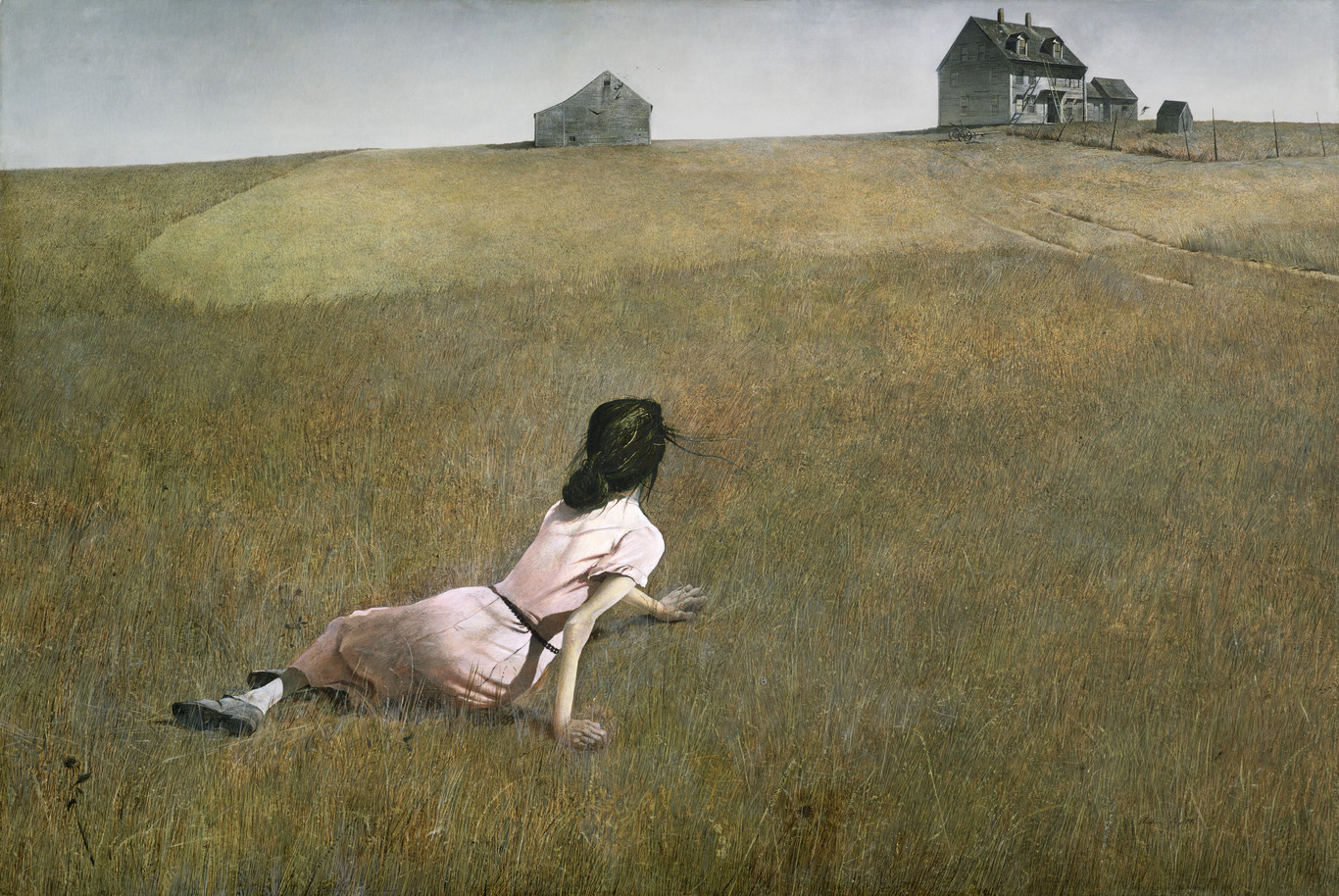ART CRITICISM: Christina's World
The
artwork I am going to analyse in this second art review is Christina’s World, by the American
artist Andrew Wyeth, who was primarily a realist painter. It is a tempera on
panel which measures 81,9 cm by 121,3 cm. It was painted in 1948 and hangs
currently in the Museum of Modern Art (MOMA), in New York. This is the most
famous painting created by Wyeth, and one of the most important and known artistic
icons of XXth century (along with American
Gothic, by Grant Wood). Wyeth’s favourite subjects were the lands where he
lived and their people, especially his hometown, Chadds Ford (Pennsylvania),
and his summer home in the Mid Coast of Maine. This painting, set in this
second geographic location, depicts an ageless girl, Christina, lying on a bare field. A vast area of the grass, surrounding the
house is cut. The girl, leant back among the grown grass, is looking at an old
house and other adjacent buildings, such as a barn, in the distance.
In
his works, Wyeth sought to depict even the tiniest details. In this painting,
he rendered every single blade of grass and every single strad of Christina’s
hair. He used a muted colour range, and earth colours are predominant. The
subject matter is connected with the interests of the painters joined under the
umbrella term American Scene (American Regionalism and Social Realism), who wanted to record
the American essence by depicting scenes
of typical American life in a naturalistic, descriptive style. It does not mean
that these artists were an organised movement. However they all stressed the idea
of creating an American style of art, moving away from abstraction and the
avant-gard which were developing in Europe in the meanwhile. In Christina’s World the quotidian scene is
imbued with a poetic mystery (the loneliness of the girl, and the distance
between her and the house suggest an imagined or dreamed reality), which is a
trail of Magical Realism.
I
feel that this picture conveys a sense of nostalgia, perhaps about a lost
childhood. It is important here to take into account that I see a little girl
in the painting (or, at least, an ageless girl), even though the real Christina
was likely to be a grown woman by the time the work was painted. However, there seems to be a story of disease behind the image. Christina Olson, a Wyeth’s
neighbour in Maine, had undergone a disease which made her suffer from muscular
dystrophy (see Christina’s fingers and elbow). This is the reason why, although
it is easy to think that she is lying in a relaxed way, she could be actually crawling
through the grass. The success of this work of art might have been due to the
fact that we all know sorrow, and we all have things to recover from, like
Christina. And this sorrow often implies early maturity, but also the desire to
never grow up. But as it is written above, before I knew about this story, I
thought it was an image about the wistfulness hidden in who we were. Because Christina’s
nostalgia (and my own nostalgia) is not about leaving, but rather about
returning to find that things that we care about have changed: ourselves, our
family, our chilhood home, our hometown.
When
you encounter an artwork like this, a major question comes up: How can I
approach an icon of a nation and a period? I believe, maybe in a too
romanticised sense, that the most sensitive and thought-provoking painters are
those who take a simple or quotidian moment and turn it into an eternal thing,
thus attaining a reconciliation between the eternity and our lives. Andrew
Wyeth accomplished this goal in Christina’s
World. I think this is one of the reasons this evocative painting is so
powerful, and has become such a symbol.
Best regards,
Jacobo
González
An
example of the popularity of Christina’s
World:


Comments
Post a Comment